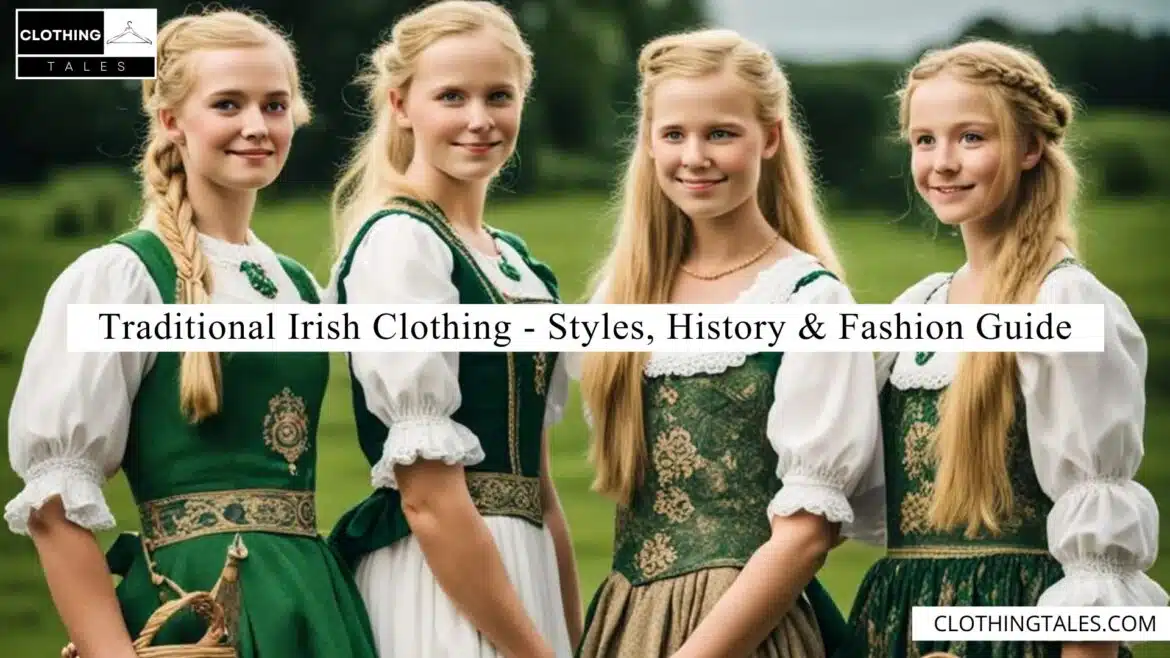Table of Contents
When you picture the rolling green hills of Ireland, you might also imagine the rich tapestry of traditional Irish clothing — colorful, practical, and deeply tied to the island’s culture. Whether it’s the rustic Aran sweaters from the Aran Islands or the sturdy Donegal tweed jackets, Ireland’s sartorial history is as lively and enduring as its legendary folklore. Through centuries of hardship and triumph, Irish people expressed their spirit not only through poetry and music but through fashion as well.
Today, Irish fashion continues to honor its roots while embracing modern influences, blending the old with the new. From the elegant grandfather shirt to the iconic Irish walking hat, every piece has a story. Let’s dive into the fascinating world of traditional Irish attire—exploring its styles, history, and how you can weave a bit of Celtic charm into your wardrobe today!
A Stroll Through History: The Roots of Traditional Irish Clothing
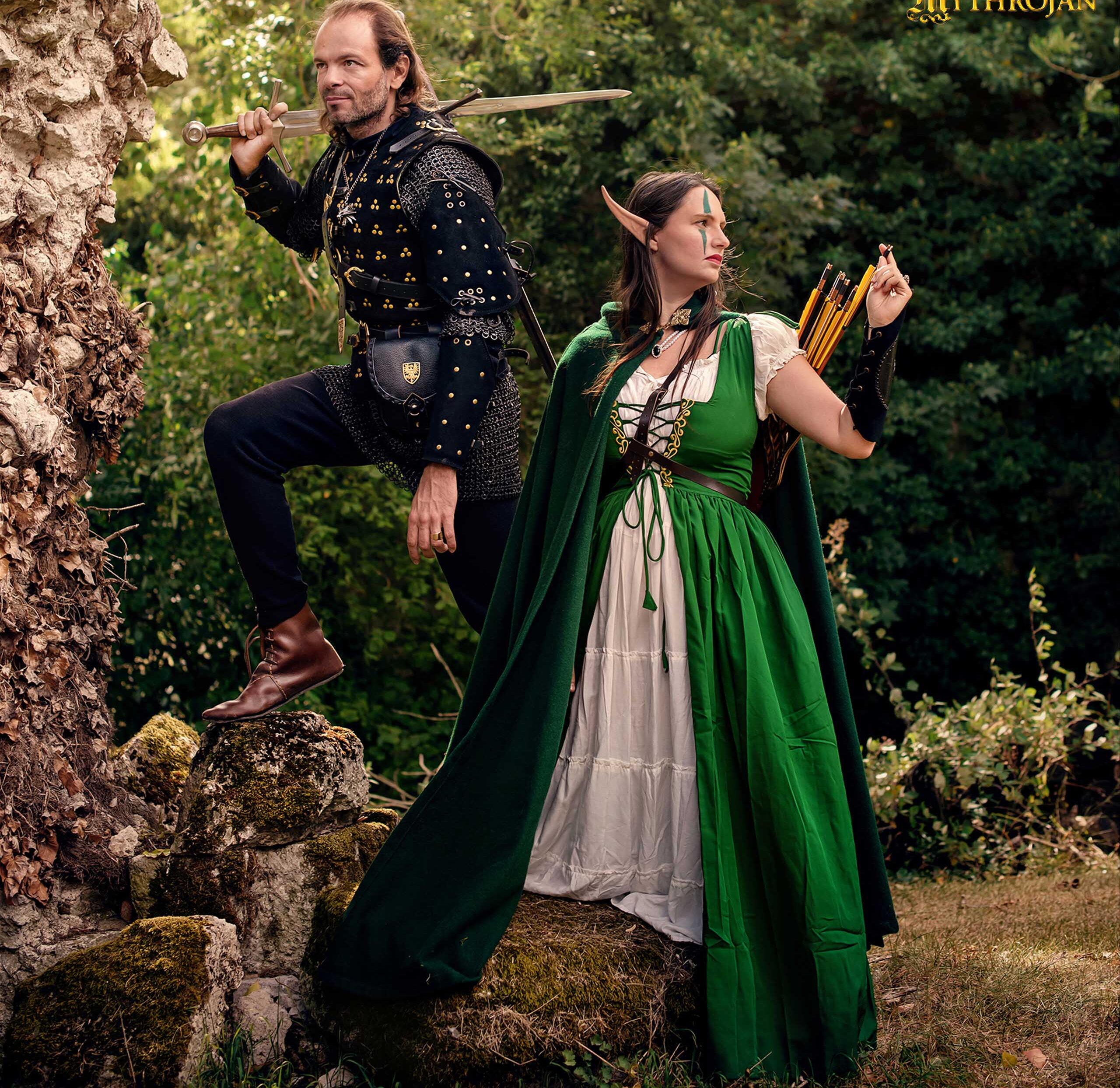
Credit: medieworld.com
Traditional Irish clothing evolved over centuries, deeply influenced by geography, climate, and social structure. In early times, clothing was primarily made from linen and wool, both abundant in Ireland’s cool, damp climate. Bright dyes from plants like woad and madder gave vibrant colors to garments, adding joy to daily life.
By the 20th centuries, political turmoil and economic challenges left their mark on irish clothing traditional. Still, through all changes, the Irish preserved distinctive garments that we still celebrate today.
During the early 20th centuries, most rural Irish people wore simple but hearty clothing. Men and women both donned layered outfits to fight off the often unforgiving weather. Women wore heavy skirts, aprons, and shawls, while men sported trousers, vests, and jackets — often topped with a woolen Irish walking hat.
Key Elements of Traditional Irish Clothing
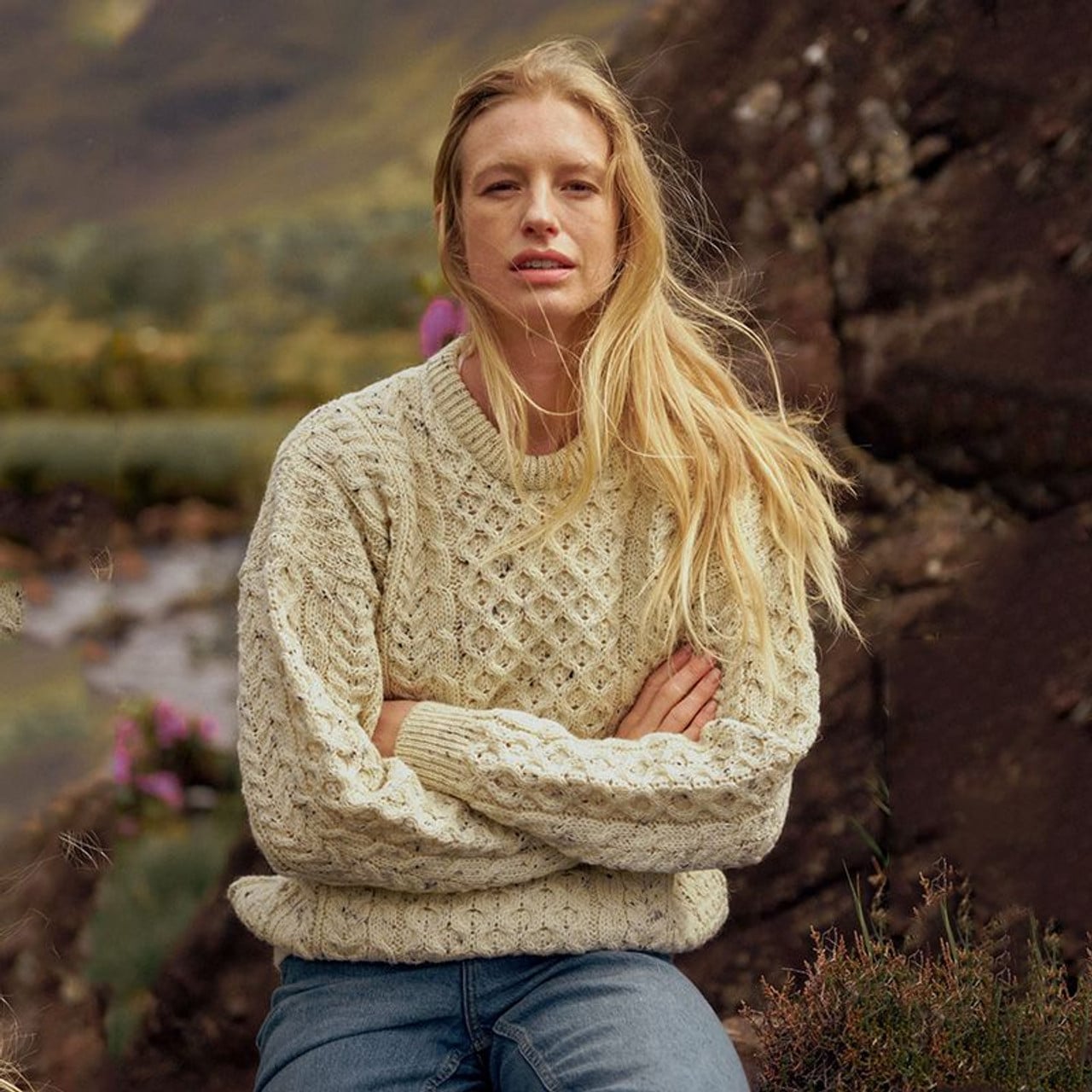
Credit: shamrockgift.com
1. Aran Sweaters
No symbol of traditional Irish style is more iconic than the Aran sweaters. Originating from the Aran Islands, these sweaters were knitted with intricate cable patterns symbolizing different hopes, like safety at sea or good luck. Made from unscoured wool that retained natural lanolin, they offered exceptional warmth and water resistance—ideal for fishermen braving the Atlantic.
Today, Aran sweaters are a global fashion staple, admired not just for their beauty but their deep connection to Irish heritage.
2. Irish Tweed and Donegal Tweed
Another quintessential fabric is Irish tweed, particularly Donegal tweed, crafted in County Donegal. Its characteristic flecks of color mimic the hues of the Irish landscape—heather, moss, and stone. This hard-wearing cloth became synonymous with typical Irish clothing, offering both durability and style.
Tweed jackets, waistcoats, and caps became fashionable in the 20th centuries, and remain a major export and symbol of Ireland today.
3. The Irish Walking Hat
The Irish walking hat — also known as the flat cap — is the crown jewel of traditional Irish wear for men. Made often from Donegal tweed, it was practical, warm, and stylish. A staple among farmers and city men alike, it still graces heads around Ireland and far beyond.
4. The Grandfather Shirt
The grandfather shirt—a collarless, buttoned linen shirt—represents comfort and timelessness in traditional Irish clothes. Once standard everyday wear, today it embodies rustic elegance and is a favorite for casual and formal Irish-themed events.
5. Celtic Clothing Elements
Celtic clothing often incorporated intricate knotwork and symbolic motifs embroidered onto garments. While many modern interpretations lean heavily on these designs, historically they were subtler, often seen in cloaks, belts, and jewelry rather than everyday tunics or skirts.
Traditional Irish Clothing for Men and Women
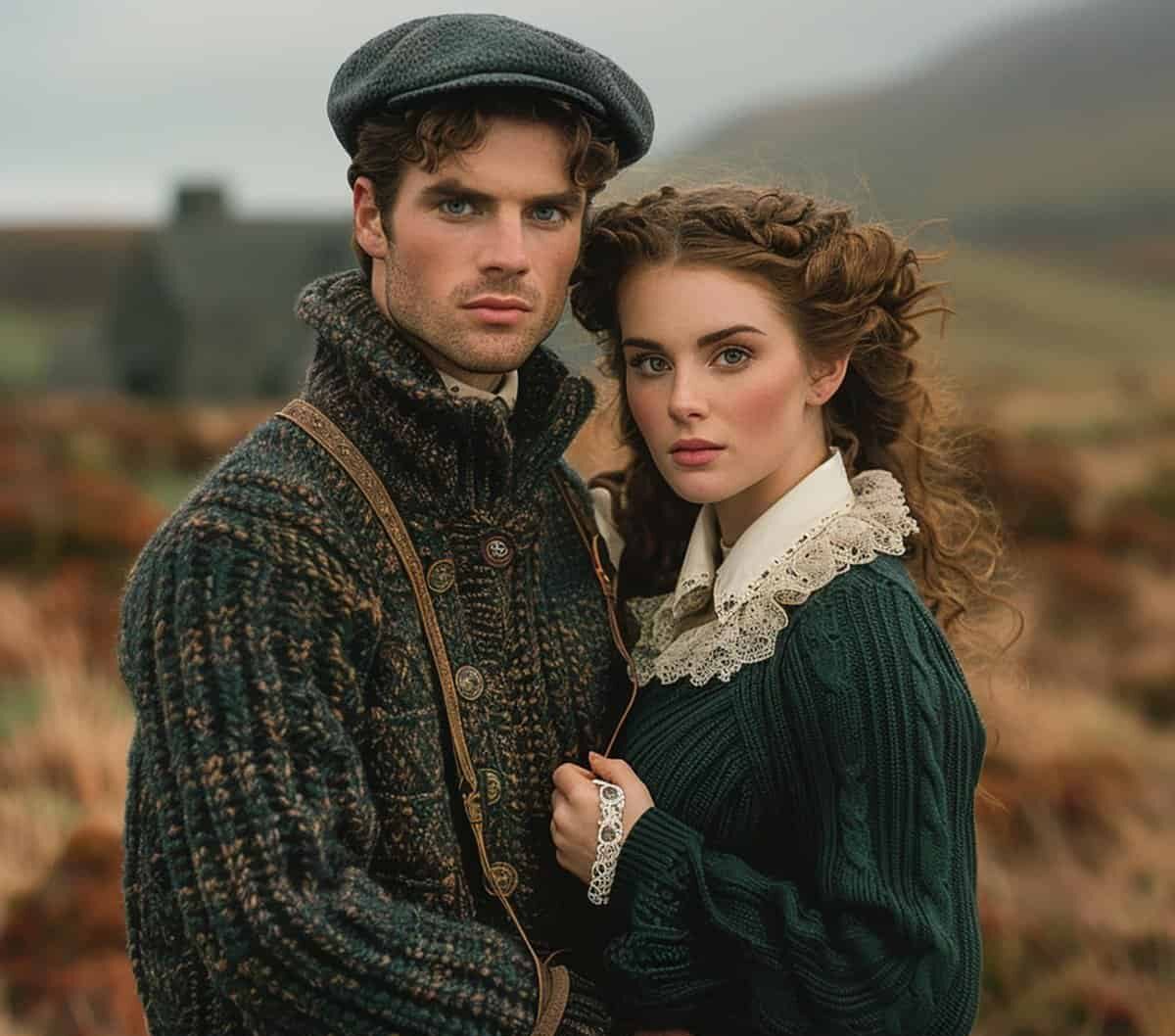
Credit: civilisable.com
In rural communities especially, men and women had distinct but complementary clothing traditions.
-
Men typically wore heavy trousers (often woolen), a grandfather shirt, a waistcoat, and a Irish walking hat. On special occasions, a tailored tweed jacket completed the traditional Irish outfit.
-
Women wore ankle-length skirts, high-necked blouses, knitted shawls, and sturdy boots. Practicality was key — their traditional clothing had to stand up to farm work and household chores.
For both men and women, cloaks made from thick wool were vital during harsh winters.
Irish Dance and Clothing
An important aspect of Irish cultural life is Irish dance. Here, traditional Irish clothing took on a more decorative form. Girls performing dances wore brightly embroidered dresses that featured Celtic knotwork and vivid colors. Boys usually wore dark trousers, shirts, and waistcoats—sometimes with sashes or capes echoing ancient Celtic warriors.
The beauty of Irish dance costumes reflects centuries of pride and artistic expression, creating a dazzling visual connection to Ireland’s storied past.
Ireland Traditional Clothing in the Modern World
In today’s Ireland, elements of traditional Irish attire are often mixed with contemporary styles. A cozy Aran sweater paired with jeans, or a Donegal tweed blazer worn over a modern shirt, blends old-world charm with modern chic.
Tourists visiting Ireland often seek authentic irish traditional clothing to take home: whether it’s a rugged Irish tweed cap, a grandfather shirt, or an intricate Aran sweater. These pieces don’t just serve as souvenirs; they carry a little piece of Ireland’s soul.
Festivals, weddings, and Irish cultural events see a rise in wearing traditional Irish clothes. Family crests, Celtic knot designs, and ancient Gaelic patterns are proudly displayed in modern interpretations of traditional Irish outfit.
Tips for Embracing Traditional Irish Wear
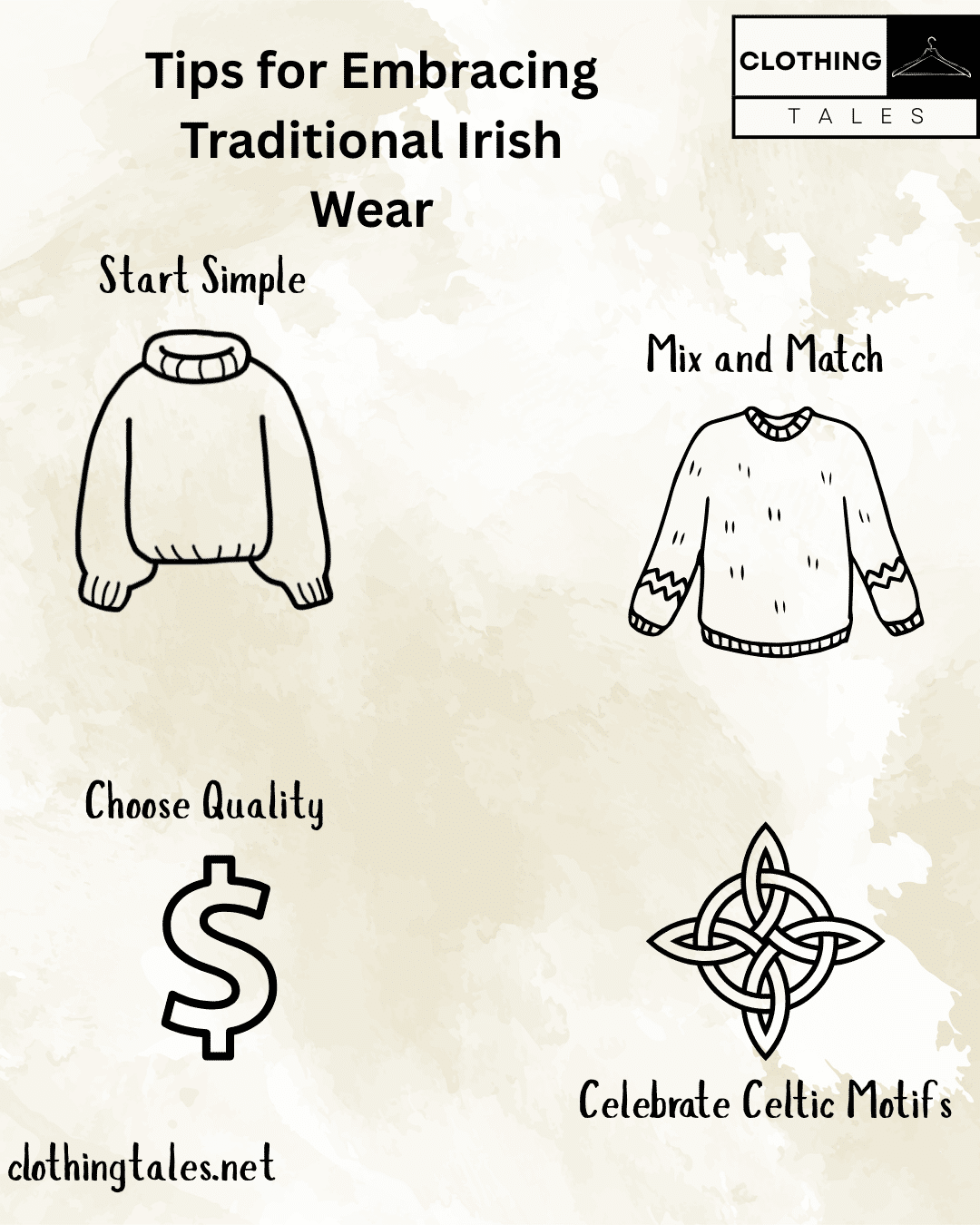
If you’re inspired to add a dash of Ireland to your wardrobe, here are a few tips:
-
Start Simple: Invest in an authentic Aran sweater or a Donegal tweed cap. These are versatile pieces that complement nearly any outfit.
-
Mix and Match: Pair a grandfather shirt with modern trousers, or layer a tweed jacket over casual wear for an effortless fusion look.
-
Choose Quality: True Irish clothing is built to last. Authentic tweed or hand-knitted wool may cost more, but it offers lasting beauty and warmth.
-
Celebrate Celtic Motifs: If you want a more traditional touch, look for garments featuring Celtic embroidery or woven knotwork patterns.
Final Thoughts: Weaving History into Every Stitch
Irish traditional clothing is more than just fabric—it’s history, culture, and resilience stitched together by the hands of a proud people. Whether worn on the windswept shores of the Aran Islands or on bustling city streets, these garments tell the story of a nation.
In every Irish tweed thread, every Aran sweater‘s cable patterns, and every grandfather shirt‘s soft linen folds, lies a legacy worth celebrating. Wearing traditional Irish attire is not merely about style—it’s about honoring the endurance, creativity, and spirit of the Irish people.
So next time you slip on a traditional Irish outfit, tip your Irish walking hat to the generations that wove beauty, practicality, and pride into the fabric of daily life.
Because when it comes to Irish clothing traditional, every stitch has a story — and that story is Ireland itself.
